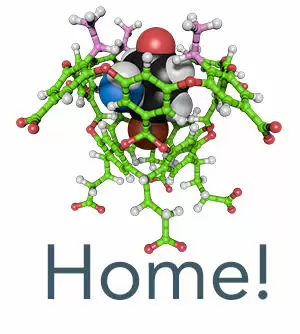Gibb, B. C. The centenary (maybe) of the hydrogen bond. Nature Chemistry 2020, 12, 665–667.
Publications
2020
Gibb, B. C. The Seven Deadly Sins. Nature Chemistry 2020, 12, 104-106.
Gibb, B. C. Food for thought. Nature Chemistry 2020, 12, 425-42.
Cai, X.; Kataria, R.; Gibb, B. C. Intrinsic and extrinsic control of the pKa of thiol guests inside yocto-liter containers. Journal of the American Chemical Society 2020, 142, 8291-8298.
Barnett, W.; Sullivan, M. R.; Long, J. A.; Tang, D.; Nguyen, T.; Ben-Amotz, D.; Gibb, B. C.; Ashbaugh, H. S. Spontaneous Drying of Non-Polar Deep-Cavity Cavitand Pockets in Aqueous Solution. Nature Chemistry 2020, 12, 589–594.
Tang, D.; Dwyer, T.; Bukannan, H.; Blackmon, O.; Delpo, C.; Barnett, W.; Gibb, B. C.; Ashbaugh, H. S. Pressure Induced Wetting and Dewetting of the Nonpolar Pocket of Deep-Cavity Cavitands in Water. The Journal of Physical Chemistry B 2020, 124, 4781-4792.
Suating, P.; Nguyen, T. T.; Ernst, N. E.; Wang, Y.; Jordan, J. H.; Gibb, C. L. D.; Ashbaugh, H. S.; Gibb, B. C. Proximal charge effects on guest binding to a non-polar pocket. Chem. Sci. 2020, 11, 3656-3663.
Science still does not have the ability to accurately predict the affinity that ligands have for proteins. In an attempt to address this, the Statistical Assessment of Modeling of Proteins and Ligands (SAMPL) series of blind predictive challenges is a community-wide exercise aimed at advancing computational techniques as standard predictive tools in rational drug design. In each cycle, a range of biologically relevant systems of different levels of complexity are selected to test the latest modeling methods. As part of this on-going exercise, and as a step towards understanding the important factors in context dependent guest binding, we challenged the computational community to determine the affinity of a series of negatively and positively charged guests to two constitutionally isomeric cavitand hosts: octa-acid 1, and exo-octa acid 2. Our affinity determinations, combined with molecular dynamics simulations, reveal asymmetries in affinities between host–guest pairs that cannot alone be explained by simple coulombic interactions, but also point to the importance of host–water interactions. Our work reveals the key facets of molecular recognition in water, emphasizes where improvements need to be made in modelling, and shed light on the complex problem of ligand-protein binding in the aqueous realm.
2019
Gibb, B. C. Hofmeister’s Curse. Nature Chemistry 2019, 11, 953-965.
Gibb, B. C. Lightning-fast chemistry. Nature Chemistry 2019, 11, 677-679.
Gibb, B. C. Plastics are forever. Nature Chemistry 2019, 11, 394-395.

